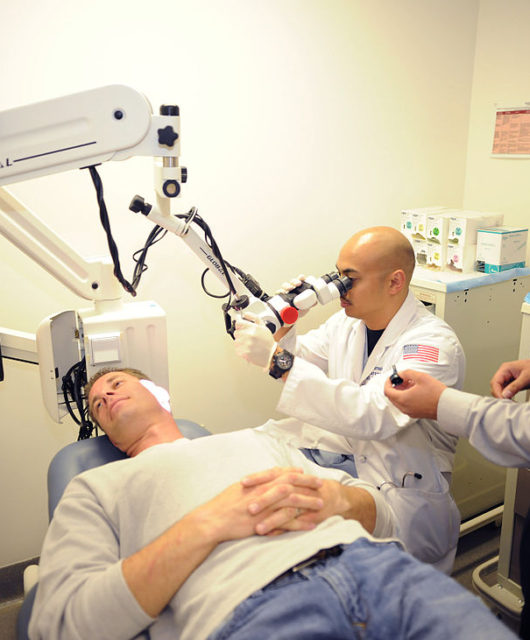All About Chiropractic Adjustments: What to Expect During Your Visit

What Is a Chiropractic Adjustment?
Chiropractic adjustments involve a skilled chiropractor applying precise force to the spine or other body regions. This technique is designed to improve spinal motion and enhance physical function. Most people seek chiropractic care for back pain, neck pain, and headaches. These adjustments can also be beneficial for conditions like sciatica, repetitive strain injuries, and even chronic conditions like fibromyalgia. The objective is to treat the initial symptoms and enhance general health. Chiropractic adjustments improve the body’s natural healing ability by fixing spinal misalignments. This holistic approach considers the interconnectedness of the body’s systems and treats the root causes of dysfunction rather than just the symptoms.
Chiropractic adjustments have become a popular treatment option for various musculoskeletal issues. Praised for their potential to reduce pain and improve functionality, they offer relief without requiring invasive procedures or medications. If you’re considering a visit, Wirth Chiropractic provides comprehensive information on what to expect during your first session. But what exactly happens during a chiropractic visit? And what should you expect? Let’s delve into the details of chiropractic adjustments, from the initial consultation to post-treatment care. Understanding these steps can help you feel more comfortable and prepared for your visit. Gaining insight into the process can also help alleviate anxiety or misconceptions about chiropractic care.
Pre-Adjustment Consultation
Your first visit often starts with a consultation. It includes a detailed discussion of your medical history, any symptoms you are experiencing, and a physical examination. Your chiropractor will likely ask questions about your lifestyle, such as your activity level, diet, and previous injuries or treatments. This in-depth evaluation helps develop a personalized treatment plan that addresses your needs. In this appointment, you may be advised to have diagnostic tests like X-rays or MRIs to understand your condition better. These tests can help pinpoint the exact areas causing discomfort and guide the chiropractor in creating an effective treatment plan. The initial consultation is crucial for setting realistic expectations and goals for your care.
The Adjustment Procedure
The adjustment is typically quick and performed on a specially designed chiropractic table. You’ll often hear a popping or cracking sound during the procedure, simply releasing gas from the joints. While this might sound alarming, it is usually painless and can provide almost immediate relief. The chiropractor applies a controlled, sudden force to a spinal joint using their hands or a small instrument. Different techniques can be used depending on your specific condition and comfort level. These methods include the diversified technique, which involves precise hands-on thrusts, and the activator method, which uses a small handheld device to deliver gentle impulses to the spine. Understanding the various techniques can help you feel more at ease during the procedure.
Follow-Up Care and Exercises
After the adjustment, your chiropractor may suggest specific exercises and lifestyle changes to complement your treatment. These recommendations are tailored to help you maintain your progress and prevent future issues. Incorporating exercises that focus on strengthening and stretching can be particularly beneficial. For example, core muscle strengthening exercises can aid in spine support and decrease the chances of future misalignments.
In addition to exercises, ergonomic advice for your work environment and suggestions for improving your posture may also be provided. Follow-up visits are often recommended to monitor your progress and make any necessary adjustments to your treatment plan. Consistency is critical to achieving long-term benefits from chiropractic care.
Common Myths About Chiropractic Care
Many myths surround chiropractic care, such as the idea that it is only for back pain or that it’s not safe. However, research has shown that chiropractic adjustments are safe and effective when done by a certified practitioner. For various conditions, chiropractic care can be a valuable component of an overall treatment plan. Another common myth is that chiropractic care requires lifelong treatment. In reality, the length of treatment varies depending on the individual and their specific needs. While some may benefit from ongoing maintenance care, others may only require a few sessions to achieve significant improvements. Understanding these truths can help you make informed decisions about your healthcare options.
Scientific Evidence and Benefits
Chiropractic treatment is more effective than traditional methods in relieving sudden lower back pain. Additionally, patients often report improvements in overall well-being and energy levels. These benefits extend beyond pain relief. Chiropractic manipulations may increase flexibility, improve sports abilities, and strengthen the body’s defense system. Chiropractic care helps the body heal and function at its best by treating the underlying reasons for pain and dysfunction. The thorough approach to overall health and well-being makes chiropractic care beneficial for numerous people.
When to Consider Chiropractic Adjustments
If you’re experiencing persistent musculoskeletal pain or discomfort, consult a chiropractor. While chiropractic care isn’t suitable for everyone, many people find it a highly effective treatment option that offers relief without surgery or medication. Always seek advice from a medical expert to confirm the appropriate decision.
Chiropractic care can also benefit those looking to enhance their health and well-being. Whether you’re dealing with chronic pain, recovering from an injury, or seeking to improve your posture and mobility, a personalized chiropractic treatment plan can be tailored to your needs. Regular adjustments can help maintain the health of your spine and nervous system, promoting long-term wellness.









